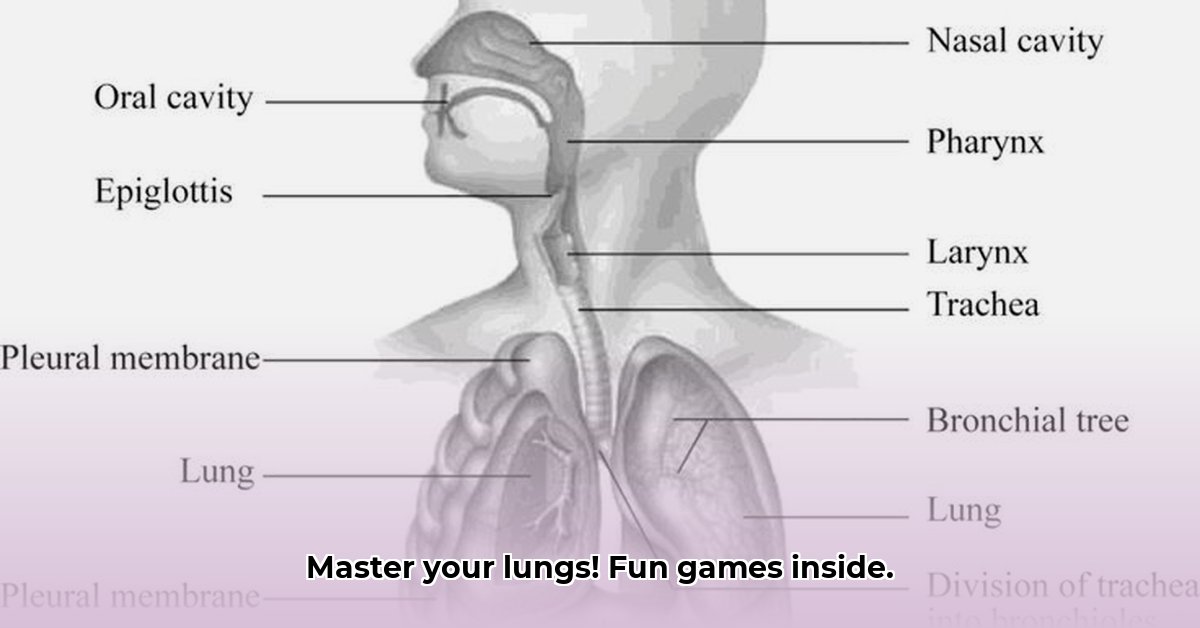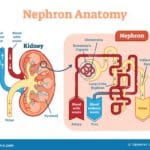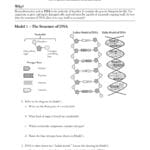Learning about the respiratory system can be engaging with interactive games. This article explores how these games make learning about our lungs and breathing fun and effective. We’ll look at some top games, highlighting their strengths and how to use them most effectively.
Exploring Interactive Games for Respiratory System Education
The respiratory system – including the lungs, trachea, and diaphragm – can be complex to learn. Interactive games can transform this task into an engaging adventure. This active approach is more effective than rote memorization. How do games help kids learn about the respiratory system in a more fun way?
The Benefits of Gamified Learning on Respiratory Anatomy
Games are powerful learning tools because they make learning active and engaging. Respiratory system labeling games help kids build a strong foundation of knowledge. Effective games include clear visuals, helpful hints, varied activities, and progress tracking. Students engage more deeply with the material instead of passive memorization.
Choosing the Right Respiratory System Game: Tips for Parents and Educators
Finding the right game is crucial, as what works for a younger child might not suit an older one. Consider the child’s age, learning style, and existing knowledge. Look for games that focus on the basics or delve into complexities like alveoli and bronchioles. The ideal game balances entertainment and educational value, ensuring that kids are both engaged and learning.
Here’s what to look for in a good respiratory system game:
- Clear and Simple Graphics: Choose games with simple, uncluttered, and colorful illustrations to aid understanding.
- Helpful Hints and Feedback: The best games offer support, guiding children to figure out answers independently and build confidence. Immediate feedback reinforces correct answers and helps correct misunderstandings.
- Variety is Key: Look for games with varied activities like matching, drag-and-drop, or quizzes to prevent boredom.
- Progress Tracking: Games that track progress provide a sense of accomplishment, motivating continued learning. Detailed reporting on areas where the child excels and where they need more practice is essential.
- Engaging Storylines and Characters: Games that incorporate engaging narratives or characters can enhance motivation and make learning more immersive.
Navigating Available Respiratory System Labeling Resources
Websites and apps like Purpose Games, Turtle Diary, and Wordwall offer respiratory system labeling games, and Quizlet provides flashcards. However, more research is needed to determine which games are most effective. What factors should be considered when choosing resources? Teachers and parents should evaluate these platforms based on educational content, user experience, and alignment with learning standards.
Maximizing Learning with Respiratory System Games: A Step-by-Step Guide
Follow these steps to enhance learning:
- Start Simple: Begin with games focusing on major parts like the nose, mouth, lungs, and windpipe.
- Engage as a Family: Play with your child to make learning more enjoyable and provide guidance.
- Connect to Real Life: Discuss how the respiratory system works in everyday life, like breathing and exercise.
- Regular Check-ins: Monitor your child’s progress and adjust the games’ difficulty as needed.
- Incorporate Hands-on Activities: Supplement digital games with hands-on activities, such as building a model lung or conducting simple experiments to demonstrate breathing.
Innovations in Respiratory System Learning Games
Future respiratory system labeling games could adjust to individual learning paces, and virtual reality could offer lung tours. Games might integrate with classroom learning management systems for efficiency. Are there VR applications or potential AI integrations to help improve learning outcomes? Adaptive learning technologies can personalize the learning experience, providing customized content and feedback based on the student’s performance.
Concise Guidelines for Optimal Selection of Respiratory Games
| Feature | Ideal Characteristics | Why It Matters |
|---|---|---|
| Visuals | Clear, age-appropriate illustrations; uncluttered design; high-quality graphics | Easy to understand; prevents visual overload; engages the learner. |
| Game Mechanics | Fun and engaging; plenty of variety; intuitive controls | Keeps kids motivated and prevents boredom; ensures ease of use. |
| Feedback & Hints | Helpful guidance; doesn’t give away all the answers; positive reinforcement | Supports independent learning and problem-solving; builds confidence. |
| Progress Tracking | Clearly shows improvement; celebrates accomplishments; identifies areas needing more attention; detailed reports | Encourages continued play; highlights strengths and weaknesses. |
| Device Compatibility | Works on computers, tablets, and phones; cross-platform compatibility | Allows flexibility and accessibility. |
| Educational Accuracy | Content aligns with curriculum standards; medically accurate information | Ensures that students are learning correct and relevant material. |
| Accessibility | Compliant with accessibility standards (e.g., screen reader compatibility, adjustable font sizes) | Ensures that the game is usable by all students, regardless of their abilities. |
Choose games that spark interest and make learning about the respiratory system exciting.
Selecting the Best Interactive Respiratory System Game for 5th Graders
Key Takeaways:
- Games help make learning about the respiratory system fun.
- Ensure the games accurately represent the respiratory system.
- Consider a variety of activities like labeling and quizzes.
- Ensure the game suits a child’s learning style and pace.
- Read reviews before deciding which game to use.
- Look for games that offer a balance of challenge and support.
Essential Considerations for Respiratory System Games
Choosing a game for a 5th grader requires careful consideration. What should you look for?
- Accuracy: Ensure the game accurately depicts the respiratory system’s structure and functions. Consult with science educators or medical professionals for validation.
- Interactivity: Look for interactive elements like simulations and quizzes.
- Age Appropriateness: The game should be challenging but suitable for a 5th grader’s knowledge. Content should be aligned with the 5th-grade science curriculum.
- Engagement: The game should be fun and hold the child’s attention.
- Educational Value: The game should help the child learn about the respiratory system.
Types of Interactive Games for Respiratory System Instruction
Games may focus on labeling or add quizzes to test understanding. Consider the following features when choosing a game:
| Feature | Description | Example |
|---|---|---|
| Labeling | Identifying and placing labels on different parts of the respiratory system. | Drag-and-drop activity labeling lung parts. |
| Quizzes | Testing knowledge of respiratory system structures and functions. | Multiple-choice questions on respiratory processes. |
| Interactive Simulations | Engaging the student with simulated processes within the respiratory system. | Simulate the mechanics of breathing, showcasing how the diaphragm and lungs work together. |
| Virtual Reality Experiences | Immersive, three-dimensional environments that allow students to explore the respiratory system in a realistic setting. | A virtual tour inside the lungs, demonstrating gas exchange at the alveolar level. |
| Augmented Reality Apps | Apps that overlay digital information onto the real world to enhance learning. | An AR app that allows students to visualize the respiratory system in their own bodies using a smartphone. |
Enhancing Learning Beyond the Game
Encourage discussion about what has been learned, connecting game information to real-world situations. How can real-world connections improve a child’s understanding? Connect the game to practical scenarios, such as explaining how exercise impacts breathing or how smoking affects lung health.
The best interactive respiratory system game involves careful evaluation of accuracy, interactivity, and age appropriateness.
Interactive Respiratory System Labeling Games for Diverse Learners
Key Takeaways:
- Interactive games, like those with labeling exercises, help kids learn about the respiratory system in a variety of ways.
- Games vary widely in teaching methods and assessment.
- Printable worksheets are a useful addition for offline learning.
- It’s challenging to compare games due to different measurement methods.
- More adaptable games with better feedback are needed.
- Games should cater to different learning styles (visual, auditory, kinesthetic).
Factors in Selecting Suitable Learning Resources
Want to make learning about the respiratory system fun for your kids? Selecting the correct puzzles can assist with this. It is important to consider what works best for your child’s learning style.
What Constitutes A Quality Respiratory System Game?
Consider:
- Clarity and Accuracy: Ensure diagrams are clear and accurate.
- Ease of Use: Ensure that your child can navigate the game easily.
- Engagement: Is the game engaging, and does it hold the child’s attention?
- Feedback Mechanisms: Does the game give feedback after each attempt?
- Assessment Methods: How does the game assess understanding?
- Accessibility: Is the game adaptable? Should you use a printable option?
- Adaptability: Does the game adapt to different levels of understanding?
Evaluation of Learning Platforms
Several online platforms offer games, with many including printable worksheets for diverse learning environments. A lack of standardized assessment makes comparisons challenging.
| Game Platform | Strengths | Weaknesses |
|---|---|---|
















